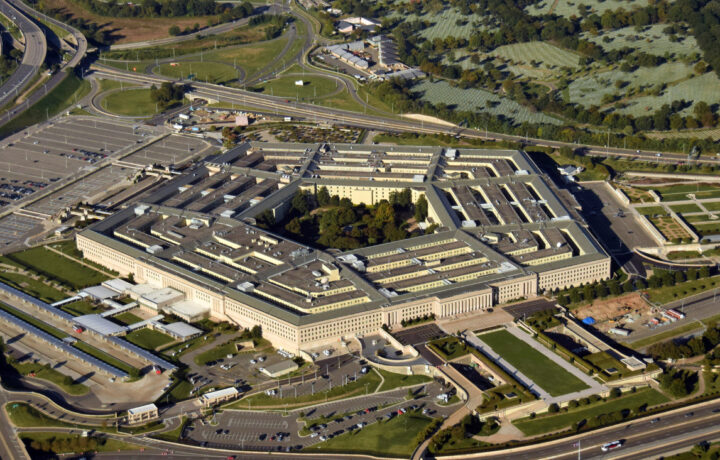The United States Department of Defense (DoD) has undergone numerous changes this year under Secretary of Defense Pete Hegseth. That has included new grooming standards that have all but eliminated the wearing of beards, new fitness standards, and even the department’s name has been changed.
To circumvent the need for Congressional approval, the Pentagon has adopted its alternative official name, the Department of War, while Hegseth now goes by the title Secretary of War.
The latest change is in how the DoD will purchase its platforms, with Hegseth announcing earlier this month that the executive offices that have long overseen the Pentagon’s procurement will be replaced with “portfolio acquisition executives.”
Beyond eliminating entire officers, executives will be empowered to make decisions and be more directly accountable for their performance.
Since taking charge of the DoD, the former Fox News weekend morning host has vowed to eliminate bureaucracy within the agency, while also calling for greater competition, the elimination of excessive regulations, and the use of commercial technology.
“Rebuilding our military and reestablishing credible deterrence demands the Department of War (DoW) put our Acquisition System and Enterprise on a wartime footing and dramatically accelerate the fielding of new technology and advanced capabilities to maintain the military superiority of our Armed Forces,” Hegseth wrote in a memo.
“To drive urgency and achieve acceleration, we recently transformed the way military requirements are developed, and now direct the transformation of the Defense Acquisition System (DAS), in accordance with Executive Order (EO) 14265, ‘Modernizing Defense Acquisitions and Spurring Innovation in the Defense Industrial Base,’ and an overhaul of the Foreign Military Sales system to ensure we are rapidly delivering capabilities for our Warfighters and allies and partners,” the secretary added.
DAS to WAS
According to Hegseth’s directive, the DAS will be redesignated the Warfighting Acquisition System (WAS) and will prioritize the “timely and urgent delivery” of the operational capabilities needed by the modern warfighter. It sought to recognize that acquisition is a component of the Pentagon’s warfighting function, but acknowledged that “continuous adaptation and improvement” remains necessary.
Hegseth suggested that the current acquisition, delivery, and field times are unacceptable and that the issues stem from three “systemic challenges.”
These included “fragmented accountability” that arises from the lack of a single leader with the necessary authority to lead the programs and ensure the urgent delivery of results. At the same time, broken incentives now reward the complete satisfaction of every requirement and specification at a significant cost to on-time delivery.
Finally, Hegseth argued that current government procurement behaviors “disincentivize” industry investment, efficient production, and growth. That has led to a constrained industrial capacity that cannot surge or adapt quickly.
“Speed to delivery is now our organizing principle,” Secretary Hegseth said Friday during a 70-minute speech at the National War College in Washington earlier in November. “It is the decisive factor in maintaining deterrence and warfighting advantage. If our warfighters die or our country loses because we took too long to get them what we needed, we have failed. It is that simple. The sense of urgency has slipped too much, and when you look at what we face, we have to recapture it.”
SAE to Execute the Change
Hegseth also directed the Under Secretary of War for Acquisition and Sustainment (USW(A&S)) and the Service Acquisition Executives (SAE) to begin executing the transformation. It called for implementing guidance for cross-cutting transformation based on the initiatives contained within the attached Acquisition Transformation Strategy within 30 days, followed by the publication of the USW(A&S) implementing guidance within 60 days.
Each military department will provide the Under Secretary with its respective implementation plan in response to the USW(A&S) guidance and the attached strategy.
“To ensure timely and effective implementation, the USW(A&S) will chair monthly Acquisition Acceleration Reviews to track the establishment of Portfolio Acquisition Executives, portfolio scorecard performance, removal of unnecessary barriers, and adoption of this directive,” Hegseth further laid out in his directive.
The reviews will then focus on timelines for delivering combat capability and revitalizing the industrial base to expand competition, Hegseth added.
The DoD will also adjust according as it identifies “additional opportunities” that can optimize the acquisition processes for agility.
Industry Adaptation
The new guidance is also intended to incentivize contractors, including increases in production capacity, which could in turn create additional funding streams through multi-year contracts.
“This will build on the great work already done to improve the [planning, programming, budgeting, and execution] process and how CAPE [Office of Cost Assessment and Program Evaluation] and the comptroller interact with Congress,” Hegseth added. “We commit to doing our part, but industry also needs to be willing to invest its own dollars to meet the long-term demand signals provided to them. Industry must use capital expenditures to upgrade facilities, upskill their workforce and expand capacity if they don’t, we are prepared to fully employ and leverage the many authorities provided to the president, which ensure that the department can secure from industry anything and everything that is required to fight and win our nation’s wars.”



